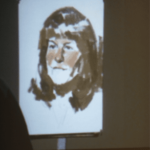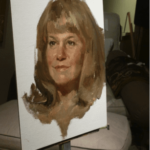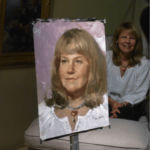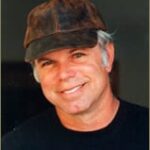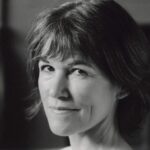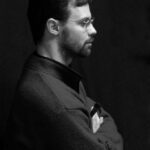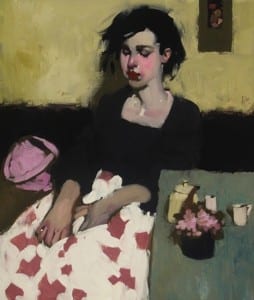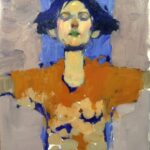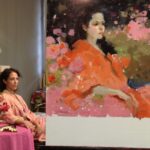
Just as significantly as seeing a quality artwork created are the intangibles communicated to onlookers, through the hairs of the artist’s brush directly into the minds and hearts of the spectators.
This is precisely what occurred on the occasion of Mian Situ’s June demonstration for the Orange County Chapter of the California Art Club at the Higbee Gallery in Costa Mesa, California. Fifty artists and collectors were treated to Mian’s process in creating a portrait of Linda Stern, wife of Jean Stern, executive director of the Irvine Museum.


“Show your soul—paint what you know.”Mian Situ
This night, Mian started with a delicate but deliberate drawing in charcoal, held at the very end as he blocked in the portrait with angular marks, some long, some short.
Then, using a dark earth color, he carefully placed the darks at the edges of the cheeks and nose, in the hair, and indicated the shapes of both eyes and eyebrows.
Medium-value flesh tones were laid in, with reds featured across the eyes, nose and cheeks. Mian’s intense observation created a complex system of grays in the skin tones, as he left highlights, blouse and jewelry for last. The way he handled the brush indicated deliberation in each stroke. Mian’s concentration was focused, his strokes confidently placed, his edge treatments considered and integrated into the whole. Even the background strokes were poetically applied, with a flourish and flick at the end of the stroke, to prevent smearing of completed passages. The blouse was created simply but masterfully with deft strokes of the palette knife.
What did we learn that night, from this master who taught without words?
• Compose with care
• Think and feel, then paint
• Make every stroke intentional
• Concentrate throughout the process
• Never lose sight of “the big picture”
• Love what you do
Perhaps most impressed with Mian’s work was historian, lecturer, juror and museum director Jean Stern—the model’s husband– who said at the portrait’s conclusion, “I’ve been in the art business since I was ten, and I’ve never experienced anything like that—that’s the most amazing thing I’ve ever seen!”
Art has that capacity: to amaze, to edify, to reveal the soul of sitter and painter—to everyone who sees and appreciates. That also is the power of the master: to bring the highest beauty to earth, to help all of us see what he sees within.
